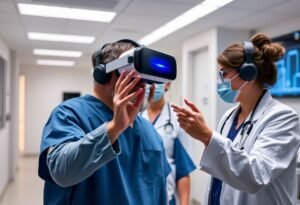Biotechnology has emerged as a revolutionary force within the field of medicine, particularly in the treatment of rare diseases. With the rapid pace of innovation, understanding how biotechnology transforms the landscape of healthcare is crucial. Rare diseases, often overlooked due to their low prevalence, are increasingly being targeted by novel biotechnological solutions that offer hope and effectiveness where traditional medicine has struggled.
Biotechnology: A Beacon of Hope for Rare Disease Treatments
Biotechnology utilizes biological systems, living organisms, or derivatives to develop products that improve human health. The significance of this sector is underscored by its ability to address **the unique challenges posed by rare diseases**, characterized by their complex mechanisms and often severe clinical consequences. In a landscape dominated by traditional approaches, biotechnology represents a progressive shift towards more personalized, efficient, and effective treatment modalities.
Key Benefits of Biotech in Treating Rare Diseases
The advent of biotechnology has brought with it numerous benefits in the context of rare disease treatments. Here are some of the critical advantages:
- Precision Medicine: Biotech innovations allow for treatments tailored to individual genetic profiles, enhancing efficacy and minimizing adverse effects.
- Targeted Therapies: Biotechnology facilitates the development of drugs specifically targeting disease mechanisms, leading to better outcomes.
- Accelerated Drug Development: Techniques such as gene editing and CRISPR expedite research and clinical development phases.
- Enhanced Diagnosis: Advanced biotechnological diagnostic tools improve the accuracy and speed of identifying rare diseases.
Current Trends in Biotechnology Innovations
Recent developments in the biotechnology sector highlight several trends paving the way for effective rare disease treatments:
- Gene Therapy: Advances in gene therapy techniques have shown promise, enabling the replacement or repair of defective genes that cause rare disorders.
- Biologics: The increasing use of biologics, including monoclonal antibodies, has revolutionized treatment protocols for several rare diseases.
- Digital Health and AI: The integration of artificial intelligence in biotech is radically improving drug discovery and patient-tailored treatment strategies.
Challenges in Biotech for Rare Diseases and Solutions
Despite the profound impact of biotechnology on rare disease therapies, several challenges remain:
- High Development Costs: The financial burden of research and development can be daunting, often leading to funding disparities.
- Limited Patient Population: Market size can deter investors and pharmaceutical companies from pursuing rare disease treatments.
- Regulatory Hurdles: Navigating the regulatory landscape can delay the progress of innovative treatments.
**Solutions** to these challenges include fostering public-private partnerships, increasing government incentives for rare disease research, and streamlining regulatory processes to bring innovative therapies to market more swiftly.
Practical Tips for Engaging in Biotech Innovations
For professionals and industry stakeholders looking to engage with biotechnology in the rare disease sector, here are some practical tips:
- Stay Informed: Regularly follow biotechnology journals and attend relevant conferences to keep up with innovations and collaborations.
- Network Actively: Engage with experts and organizations focused on rare diseases, as they can provide valuable insights and partnership opportunities.
- Invest Wisely: Evaluate potential biotech firms and innovations that demonstrate strong scientific backing and commercial viability.
A Success Story: The Case of Spinraza
A standout example of biotechnology’s success in rare disease treatment is Spinraza (nusinersen), developed for spinal muscular atrophy (SMA). This groundbreaking treatment utilizes an innovative approach to address the genetic defect causing SMA. Spinraza has transformed the lives of many patients, showcasing how biotechnology can effectively target rare conditions.
Navigating Legal and Regulatory Landscapes
As with any innovation in healthcare, there are critical legal and regulatory considerations in the biotechnology sector, particularly regarding rare disease treatments. **Regulatory agencies** like the FDA prioritize safety and efficacy, often leading to stringent guidelines for clinical trials and market approvals. Companies must ensure compliance while advocating for expedited pathways like the Orphan Drug Act, which offers incentives to manufacturers developing treatments for rare diseases.
Frequently Asked Questions about Biotechnology and Rare Diseases
Here are some common questions regarding biotechnology’s role in treating rare diseases:
- How is biotechnology changing rare disease treatments? It enables more personalized and innovative therapies, significantly improving treatment outcomes.
- What role does gene therapy play? Gene therapy is pivotal, as it directly targets the genetic root causes of many rare diseases.
- What should patients consider when seeking biotech treatments? Always consult healthcare providers to understand the suitability and implications of biotech therapies.
Conclusion: A Bright Future for Rare Disease Treatments
The impact of biotechnology on rare disease treatments marks a new era of innovation in healthcare. As we continue to embrace these technological advancements, it is essential for stakeholders to support continued research, advocate for policy changes, and foster collaborations that bridge the gaps between innovation and real-world application in treating rare diseases.
Disclaimer
This article is for informational purposes only and does not constitute professional advice on innovation. The information provided in this post should not be considered as a substitute for consultation with qualified professionals. Always seek the advice of licensed professionals.


















